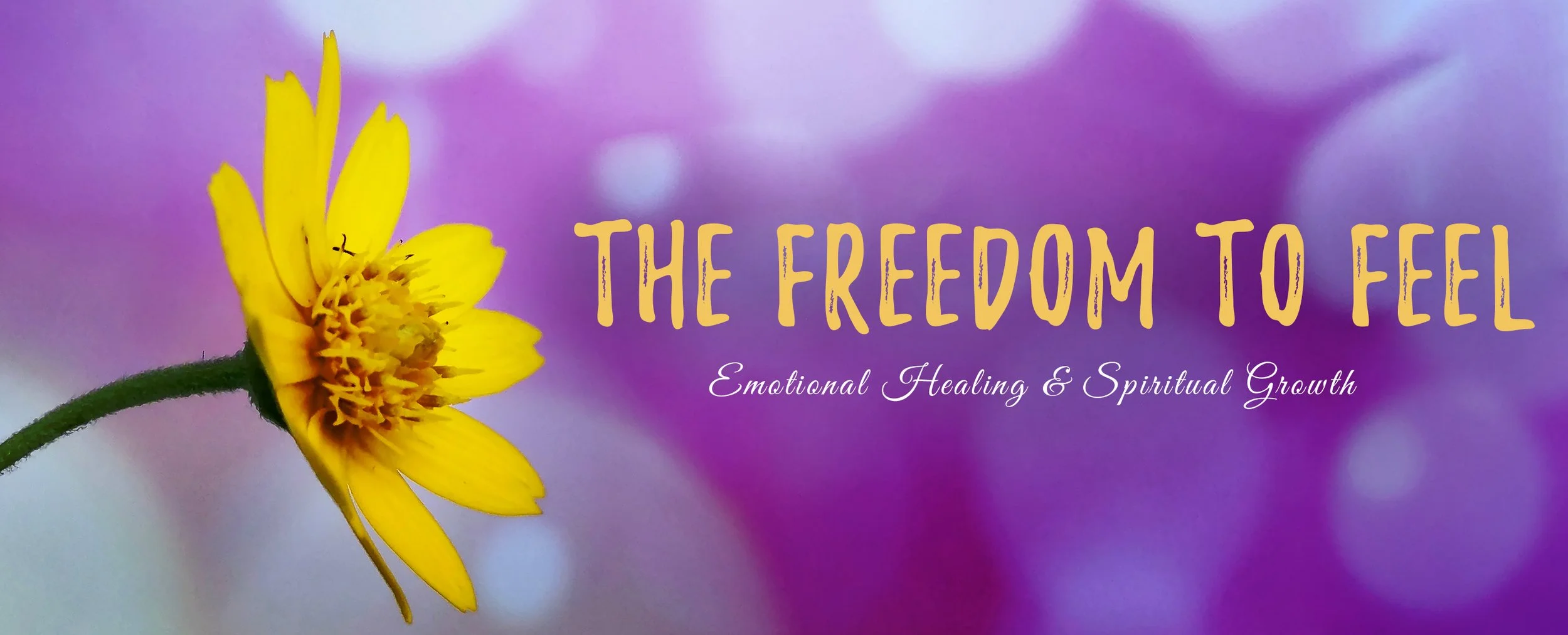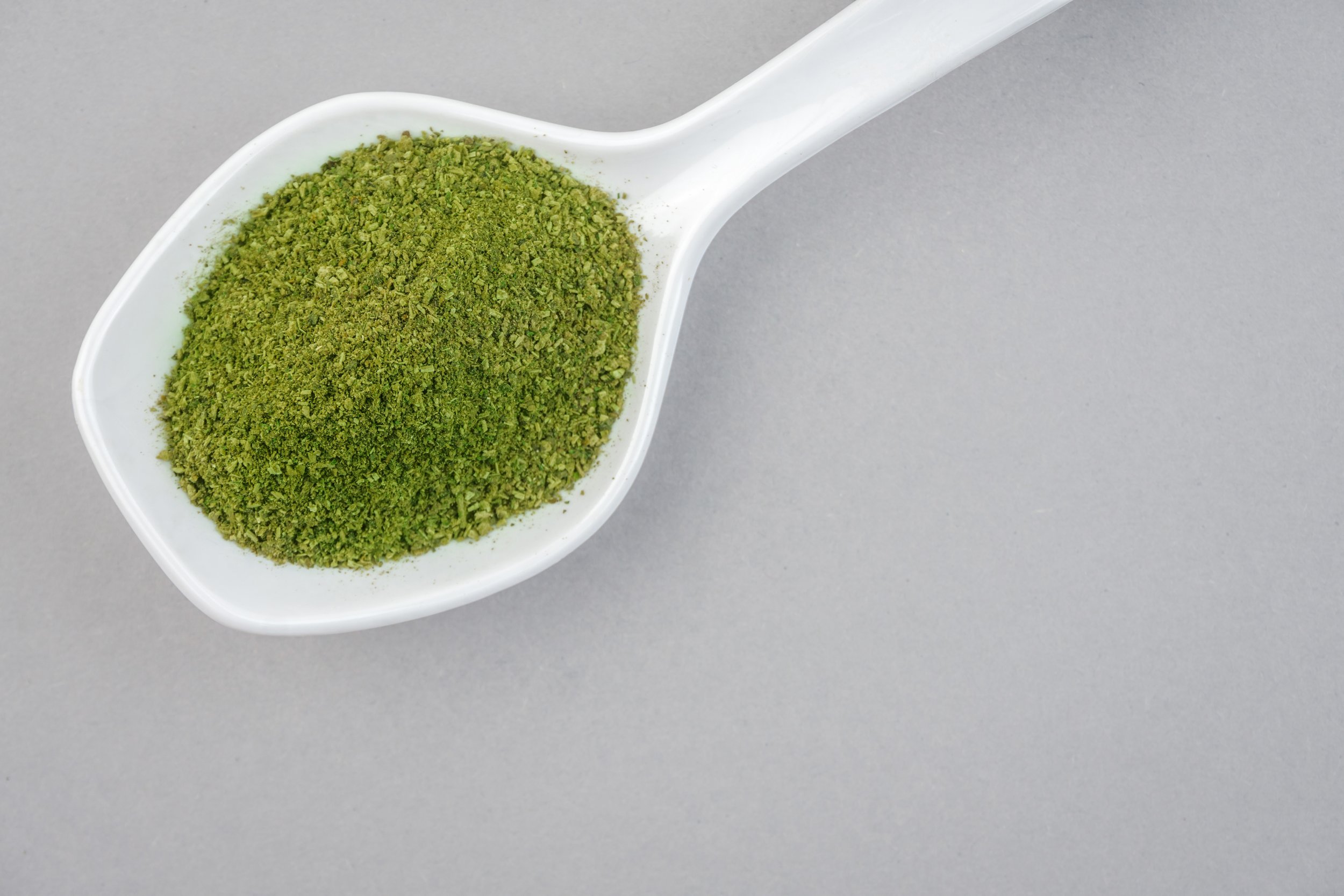DISCOVERING ENLIGHTENING IDEAS FOR A BETTER LIFESTYLE
DISCOVERING ENLIGHTENING IDEAS
FOR A BETTER LIFESTYLE
Imagine waking up every morning with a renewed sense of purpose and passion. With a better lifestyle, you can make that dream a reality. A healthier body, a more mindful attitude, and a balanced approach to life are all key components to achieve this. But where do you start? The journey towards a better lifestyle begins with discovering enlightening ideas and incorporating them into your daily routine. Whether reading inspiring literature, attending a yoga class, or simply starting your day with a positive mindset, finding what works for you is the first step. So don't wait any longer.
7 ENLIGHTENING IDEAS FOR A BETTER LIFESTYLE
● Practice mindfulness
In today's fast-paced world, it's easy to get caught up in the chaos and lose sight of what's truly important. That's where mindfulness comes in. We can become more peaceful, aware, and fulfilled by intentionally focusing our thoughts and attention on the present moment. Practicing mindfulness isn't just a passing trend; it's a powerful tool that can transform our lives. From reducing discomfort and tension to improving our ability to connect with others, mindfulness can revolutionize how we approach every aspect of our lives. So why not give it a try today? You might be surprised at how much of a positive impact it can have on your overall well-being.
● Get enough sleep
Achieving a better lifestyle can seem like a daunting task, but if you're not getting enough sleep, then it's likely that you're not feeling your best. When we lack sleep, our bodies and minds suffer, and over time, this can have serious consequences. But the good news is getting enough sleep is an easy fix that can lead to profound changes in how we feel and function daily. When well-rested, we're better able to focus, stay alert, and maintain our energy levels throughout the day. Plus, a good night's sleep can work wonders for our mood, making us more patient, creative, and resilient. So, if you want to live a fuller, happier life, ensure you're getting enough sleep. Your body and mind will thank you.
● Eat a balanced diet
Eating a balanced diet is more than a fleeting trend or fad; it's a steadfast commitment to living a healthier and happier lifestyle. We all know the saying, "You are what you eat," which couldn't be more true. A balanced diet means consuming various foods from all the different food groups, such as fruits, vegetables, lean proteins, whole grains, and healthy fats. Not only does it provide us with the necessary nutrients and energy our bodies need, but it also helps reduce the risk of diseases such as diabetes, heart disease, and obesity, among many others. Making small changes to your daily eating habits can yield remarkable benefits to your overall health and well-being, making a balanced diet one of the most empowering and enlightening ideas.
● Find your passion
Discovering your passion is the key to living a fulfilling life. It’s a journey of exploration that allows you to discover your true purpose. Finding the things that bring you joy, energy, and motivation can create a lifestyle that reflects your unique self. Whether your passion is writing, painting, cooking, or something else entirely, it’s important to pursue it with dedication and enthusiasm. By doing so, you’ll find that life becomes more vibrant, exciting, and meaningful. Those passionate about exploring new horizons and experimenting with new experiences can now Shop Delta 8 Products for Sale and discover the world of CBD products that might help them enhance their hobbies even more.
● Practice gratitude
Sometimes, in the hustle and bustle of modern life, it's easy to forget the beauty that surrounds us and the gifts we've been given. That's why practicing gratitude can be such a powerful force. Rather than focusing on what we don't have, taking time to appreciate what we do can help us cultivate a more positive outlook and a deeper sense of joy and contentment. Whether jotting down a few things you're grateful for each day or simply taking a moment to reflect on all the blessings in your life, finding ways to practice gratitude can be one of the most worthwhile habits you'll ever develop. So why not try it and see how it can transform your life for the better?
● Connect with others
Human beings are social creatures. We thrive on connection. Think about it- the happiest moments in our lives are often shared with other people. That's why connecting with others is important for a better lifestyle. We must surround ourselves with people who uplift, inspire, and challenge us. A supportive community makes us feel more confident and empowered to pursue our dreams. And on a practical level, connecting with others is essential for our mental and emotional well-being. Through these connections, we gain perspective, feedback, and advice. So, to improve your life, start by nurturing your connections with the people around you.
● Pursue personal growth
Throughout life, we strive to find happiness and purpose in our everyday existence. One way to achieve this is to pursue personal growth. This notion of constantly growing as individuals and developing new skills, ideas, and knowledge can lead to a more fulfilling and enriching lifestyle. Embracing personal growth requires a willingness to step out of our comfort zones, challenge ourselves, and learn from good and bad experiences. It's a process of self-discovery that allows us to live more intentionally and with greater purpose. While the journey towards personal growth may not always be easy, the rewards can be life-changing. So, take the first step towards a better lifestyle and commit to your personal growth today.
FINAL THOUGHTS
As you incorporate these enlightening ideas into your daily routine, you'll notice a transformative shift in your overall lifestyle. The pursuit of wellness, education, and self-improvement can lead to a sense of fulfillment and joy. You'll find new insights and opportunities to grow by staying curious and open-minded. Living a better lifestyle also means taking care of yourself and those around you, whether it's through exercise, healthy eating, or kindness. Remember, it's never too late to discover enlightening ideas and make positive changes in your life. Start today and embrace a brighter future.
Written by Virginia Morrison
LEARNING THE PRINCIPLES OF HARMONY TO BRING BACK BALANCE
Here is an insightful book that shares timeless wisdom — “The Seeker and The Teacher of Light: On the Teachings of Joachim Wippich and the Mystery of 3-6-9” by Jerry Gin
— Everyone is a Divine Being and a Thought Creation of God and thus One with God. For true happiness, people must know that they are the I AM and a co-creator. Understanding the nature of Love, Harmony, and Balance are key.
It’s so important for humans to understand that there is no separation between ourselves and God. People have lost this understanding because they have identified themselves as individual egos, which they believe are separate. They do not realize they are a wave of the ocean that is fully connected. As we awaken and learn that we are a part of God, we open to our true identity and potential and to Harmony and Love.
A corollary to this is that for anything to exist, there must be some level of consciousness. For matter to form, God is there, balancing the spiraling vortices of light. Thus, all matter has some level of consciousness (awareness) since every manifestation of matter is part of the conscious ocean that is God. All rocks, atoms, plants, animals are of God, with differing levels of awareness. Humans are more aware, and are starting to realize that they are not separate but a part of God. Humanity will also then realize that everyone and everything is connected; we are all part of the One.
We are formed in balance, but many forces can cause unbalance. For humans, it can be thoughts/perceptions, toxins, diseases, conflicts with others, etc. We must learn the principles of harmony to bring back balance. The air, water, and earth can also go out of balance, and forces will occur to bring back balance. (This will be gone into more deeply in the chapter on Harmony and Balance, and the chapter on the healing work of Joachim Wippich.)
However, it’s only our physical bodies that are of matter. Our essence, our consciousness, is not of matter. We are spirit. Even when we die, although our original physical body is no longer there, our essence or consciousness is here. That’s why when people have a Near-Death Experience, they experience themselves as being here.
My purpose in telling my story is to put forth a general roadmap of a person with a background as a scientist going through a Seeker’s Journey and coming to the same conclusion as the Teacher of Light. Our true essence is I AM; and to find Happiness, Love, and Health, point your compass to achieving Harmony and Balance. My hope is that other Seekers, with the combined stories of Joachim and myself, can be helped in their journey to find their true I AM identity and in achieving Harmony and Balance.
WE ARE THE SOURCE OF EVERYTHING
Here is an insightful book that shares healing messages, tools, and timeless wisdom — “The Success Zone: How To Discover Your Success Zone Through the Mind and Brain Connection Using Power of Thoughts, Words, and Action!” by Audrey Pullman
— We are the source of everything. The way to produce the best of creativity is to allow the creativity to flow from the inside. When we work on ourselves, we grow and evolve from inside, and allow the things to flow through us. Creativity is an idea, a thought, or an imagination, that continuously flows through our mind, and expands over time, to become the full-fledged reality of existence.
What is a thought? It’s a Mind Activator through words, energy, and a vibrational connection with the universe to achieve whatever you want in life. Words that come into your brain are activated by your neuronal system to bring messages to and from your brain for processing an action or idea. The Therapy of Thought is when these ideas enter the brain’s activated message center and have either a positive or negative impact on your thinking pattern.
Most humans live on earth but never manifest themselves. What are the greatest human needs? Every human needs to feel that they were born for a reason.
Thoughts are real things. And, like all real things, they generate energy: little packets of energy called photons, which are the fundamental particles of light. Albert Einstein discovered this law (photoelectric effect) and won the 1921 Nobel Prize in physics for his work.
Though all of us have experienced photons in many ways, perhaps you've never thought of them in relation to your thoughts, so let me give you an example: You're watching someone bully people. Suddenly, you find yourself almost taking a step back, and you feel disturbed. It's almost as if the person is throwing something at you. What you're experiencing is the toxic energy from that person's thoughts—and it's real.
Mental energy sucks others in. Think of hanging out with someone who's constantly depressed or negative and how you feel around them. Fear breeds fear. The fearful mind generates fearful probabilities. The depressed mind generates depressing possibilities. But the same can be said for the positive.
Pay attention to the energy you're taking in.
That's why we need to be discerning about who we connect with and who we listen to. We can quite literally enhance or damage each other. When we inadvertently allow others to fill our minds with their thinking, we're at their mercy.
The energy from people's thoughts is real, and we need to protect ourselves from it if it's negative or grab it with both hands if it's positive.
Thoughts and ideas from other people—including what we hear, read, and watch—have the potential to exert a controlling influence over our thinking, feeling, and choosing if we let them.
However, it's interesting to note that memories formed from shared experiences will diminish within 24 to 48 hours because the proteins they're made of denature. This essentially means that they become heat energy. That's great for negative experiences, but to maintain and sustain a positive encounter, we need to focus on it for longer periods of time to maintain the benefit.
The mind is a powerful tool, and your subconscious mind soaks up your daily focus thoughts. What to do? The map to create your own success is in the book!
ALLEVIATING PRESSURE: HOW INFLATABLE CHAIRS REDUCE THE RISK OF PRESSURE ULCERS
Pressure ulcers, also known as bedsores, are a common concern for individuals who spend extended periods in a seated position. These ulcers can be painful, debilitating, and even lead to serious complications. However, innovative solutions such as inflatable chairs have emerged as a potential aid in alleviating pressure and reducing the risk of pressure ulcers.
This article will explore the benefits of inflatable chairs in pressure injury prevention, highlighting their role in providing comfort, distributing pressure, and enhancing overall well-being.
UNDERSTANDING PRESSURE ULCERS
Pressure ulcers are localized injuries when sustained pressure on the skin restricts blood flow to a particular area. This lack of blood flow can lead to tissue damage, which progresses to the formation of pressure ulcers. Common areas affected include bony prominences, such as the buttocks, hips, heels, and shoulders.
THE ROLE OF INFLATABLE CHAIRS
1. Pressure Redistribution: Inflatable chairs are designed to distribute pressure more evenly across the seated surface. These chairs often feature adjustable air chambers or cushions that can be inflated or deflated to accommodate individual preferences and body contours. By dynamically adjusting the air pressure, inflatable chairs help reduce pressure concentration in vulnerable areas, thus minimizing the risk of pressure ulcers.
2. Customised Comfort: The full range of air comfort chairs allow users to customize their seating experience for optimal comfort. Individuals can adjust the firmness and support levels of the chair to suit their unique needs. This adaptability helps alleviate discomfort and reduces the likelihood of prolonged pressure on any single area, decreasing the risk of pressure ulcers.
3. Moisture Control: Another crucial aspect of pressure ulcer prevention is managing moisture buildup. Inflatable chairs often incorporate materials that allow for breathability and moisture-wicking properties, helping to keep the skin dry and reducing the risk of skin breakdown. By addressing moisture-related concerns, inflatable chairs contribute to overall skin health and pressure ulcer prevention.
4. Portability and Versatility: Inflatable chairs are highly portable, making them suitable for various settings. They can be used at home, in healthcare facilities, or during travel, providing individuals with consistent pressure relief and comfort wherever they go. This versatility ensures that individuals at risk of pressure ulcers can always access preventive measures.
TIPS FOR USING INFLATABLE CHAIRS EFFECTIVELY
1. Proper Positioning: Correct positioning is essential to maximize the benefits of inflatable chairs. Individuals should ensure that their weight is evenly distributed across the chair's surface and that bony prominences are adequately cushioned. Regular adjustments and monitoring of seating positions are recommended to prevent prolonged pressure on any specific area.
2. Regular Movement and Shifts: While inflatable chairs aid in pressure redistribution, it is crucial to remember the importance of regular movement and positional changes. Encouraging individuals to shift their weight and adjust their posture periodically helps alleviate pressure and improves blood circulation, reducing the risk of pressure ulcers.
3. Skin Care Routine: Maintaining good skin hygiene and implementing a comprehensive skincare routine is essential. Regularly inspecting the skin for any signs of redness or breakdown, keeping the skin clean and moisturized, and using appropriate pressure-relieving cushions or overlays in conjunction with inflatable chairs can significantly contribute to preventing pressure ulcers.
Conclusion
Inflatable chairs have emerged as a valuable tool in preventing and managing pressure ulcers. However, it is important to remember that inflatable chairs are just one aspect of pressure ulcer prevention, and a holistic approach, including proper positioning, regular movement, and skincare, should be implemented.
UNLOCKING THE MYSTERIES OF KRATOM: A COMPREHENSIVE GUIDE
Kratom is a mysterious herb that has developed a passionate following in recent years due to its ability to relieve chronic pain, anxiety, and other physical or mental ailments. Used traditionally as a stimulant by tribes in Southeast Asia, this unique plant has now made its way around the world, offering people an all-natural option for addressing health concerns that were once only available through conventional medicine.
If you've been considering trying Kratom but are still determining how it may benefit you and what strains best suit your needs, look no further. In this comprehensive guide to Kratom, we will not only uncover some of the mysteries behind this ancient remedy; but also explain why it's growing in popularity and explore how different types of Kratom can be used safely and effectively.
What Is Kratom and Where Does It Come From
Kratom, known by its scientific name Mitragyna speciosa, is a tropical evergreen tree belonging to the coffee family. It can grow up to 82 feet tall and is mainly found in Southeast Asia, particularly in Thailand, Indonesia, and Malaysia. Kratom has been traditionally used in these countries for medicinal purposes, including relieving pain, reducing anxiety, and as a stimulant.
Today, it is gaining popularity as a supplement in the United States and has raised concerns due to its potential for abuse and addiction. Kratom contains alkaloids that interact with the brain's receptors, producing effects similar to opioids and stimulants. Due to its controversial status, many countries have either banned or heavily regulated its use. Buy Kratom Online USA is a reliable option for people looking to source the compound from a trusted provider.
Understanding the Different Types of Kratom
Kratom is available in various strains, each with its own unique set of effects. Let's look at the most common types of Kratom on the market. The most commonly used strain of Kratom is Red vein kratom, which is known for its analgesic properties and can help with stress and fatigue. Additionally, red vein kratom can help with sleep and relaxation.
White vein kratom is known for its energizing effects and is commonly used to increase focus and alertness. Green vein kratom is known for its balanced effects, providing an energy boost and relief from minor pain or stress. Lastly, yellow vein kratom is a rarer strain that does not have the same intense effects as other strains but can still be beneficial in promoting relaxation and improving mood.
Potential Health Benefits of Consuming Kratom
Kratom has been used for centuries as a natural remedy to help with various physical and mental ailments. It is known to have anti-inflammatory, analgesic, and mood-boosting properties. Research suggests that Kratom can effectively relieve chronic pain from conditions such as fibromyalgia, arthritis, or injury due to its ability to bind to opioid receptors in the brain responsible for blocking pain signals.
Additionally, it may also reduce anxiety and stress and improve sleep quality. Though further research is needed to confirm the safety and efficacy of consuming Kratom regularly, growing evidence suggests that it could be an effective treatment for specific medical conditions.
How to Use Kratom in Your Daily Life
Kratom is available in various forms, including capsules, powder, and leaf. The method of consumption will depend on your desired effects and personal preferences.
For those looking for an energy boost, consuming Kratom in a tea or capsule form can be beneficial. For those seeking relief from minor aches or pains, consuming Kratom in powder form may be more suitable as the alkaloids are absorbed faster. Kratom can also be smoked, but this is not recommended as it increases the risk of lung irritation and other health problems associated with smoking.
It is important to remember that each strain has unique effects, so you should research before deciding which one to use for your needs. Also, start with a small dose and gradually increase as needed to avoid potential side effects such as nausea or dizziness. Please consult your doctor before using Kratom or any other supplement, as it may interact with certain medications or underlying medical conditions.
Potential Side Effects of Taking Kratom
Although Kratom has been used traditionally for centuries, there is still a lack of scientific evidence to support its use. Additionally, it can have some potential side effects if taken in high doses or with other substances.
Common side effects include nausea, constipation, dizziness, headache, and agitation. Additionally, Kratom may also cause increased heart rate and blood pressure. It is crucial to take Kratom in moderation and consult your doctor if you have any underlying medical conditions or are taking any medications, as it may interact with certain drugs.
Ensuring You Get Quality Kratom Products
When purchasing Kratom, it is crucial to ensure that you buy from a reliable source. Look for vendors who provide third-party lab results to confirm the quality and purity of their products. Additionally, look for vendors that offer customer support if you have any questions or concerns about their products.
Finally, please read up on Kratom safety and set realistic expectations for its effects before making your purchase. Doing this can help you determine if Kratom suits you and ensure you get the best possible experience.
In Conclusion
Kratom is an increasingly popular herbal remedy with a long history of traditional use in Southeast Asia. It has gained traction as a supplement thanks to its potential health benefits ranging from reducing pain to improving mood. Understanding the different types of Kratom, how to consume it, and potential side effects can help ensure you get the best possible experience. Finally, always purchase Kratom from a reliable source with third-party lab results.
Written by Boris Dzhingarov
THE HEALTH BENEFITS OF HAVING INDOOR PLANTS
In today’s fast-paced digital world, we can often feel disconnected from nature. However, there is a simple and beautiful way to bring the outdoors in - indoor plants! They do more than just brighten up a room or provide a touch of greenery amidst the urban concrete jungle. Indoor plants have a myriad of health benefits too, some of which you might not even be aware of.
Here are 15 health benefits of having indoor plants, proving that bringing nature indoors is not just aesthetically pleasing, but beneficial to our health as well.
Improves Air Quality
The first and most well-known health benefit of indoor plants is their ability to improve air quality. Through the process of photosynthesis, plants absorb carbon dioxide and release oxygen, creating a fresh and healthy environment within your home or office.
Some plants, like the snake plant and spider plant, even work overtime by filtering harmful toxins such as benzene and formaldehyde from the air. You can easily get these plants from a reliable plant delivery company, and start reaping the benefits of cleaner air.
Reduces Stress And Anxiety
A number of studies have shown that being around plants can significantly lower feelings of stress and anxiety. The calming influence of nature, even in small indoor doses, can have a profound impact on our mental health. This is particularly helpful in office environments where stress levels can run high. A simple potted plant on your desk can act as a natural stress-buster.
Increases Productivity And Concentration
Green is a color often associated with productivity, and there’s some truth behind this. Research has shown that having indoor plants can boost your concentration, productivity, and even your creativity. The sight of plants can stimulate your mind and keep it focused, improving your work or study output.
Helps Improve Sleep
One of the most unexpected yet pleasing benefits of having indoor plants is their role in promoting better sleep. Some plants, like soothing lavender and jasmine, are renowned for their sleep-inducing properties. They achieve this through the release of calming scents that can lower heart rate, blood pressure, and stress levels - all of which are key elements in facilitating sound sleep.
Notably, these types of plants produce oxygen primarily at night. While all plants produce oxygen during the day, specific varieties, like the snake plant and orchids, continue this process when the sun goes down. This increase in oxygen level at night can improve the overall air quality in the room, making it an environment conducive to restful sleep.
Boosts Humidity
Indoor plants also naturally increase humidity levels by releasing moisture vapor into the air. This can help in environments where air conditioning or heating can make the air dry, causing discomfort and dry skin. Plants like the Boston fern are excellent at boosting humidity indoors.
Promotes Healing
You might have noticed that hospitals often have indoor plants. This is because certain plants can contribute to faster recovery. The presence of plants in a room has been linked to lower blood pressure, less need for pain medication, and shorter recovery times, especially in post-surgical patients.
Improves Mental Well-Being
Aside from the physical health benefits, having indoor plants can also contribute to your mental well-being. Taking care of plants can give a sense of purpose and act as a form of therapy. Also, the feeling of satisfaction as you see your plants grow and thrive is immeasurable.
Encourages Mindfulness And Relaxation
Tending to your indoor plants can be a form of mindfulness practice. The simple act of watering, pruning, or just observing your plants can keep you anchored in the present moment, promoting relaxation and reducing stress.
Enhances Memory And Concentration
Indoor plants can also have a positive effect on your memory and attention span. Being around nature, even indoors, can help improve memory performance and attention span by 20%, according to a study by the University of Michigan.
Natural Noise Buffer
Indoor plants can serve as natural noise buffers. They can reduce background noise levels by absorbing and reflecting background sounds. This can be particularly useful if you live in a busy city or near a busy street, making your home or office a more serene and tranquil place.
Boosts Immunity
Many indoor plants have antibacterial properties. For instance, the Snake Plant, also known as Mother-In-Law’s Tongue, emits oxygen while also filtering toxins from the air, thereby improving overall air quality. This can help to boost your immune system, keeping you healthier.
Fosters A Positive Outlook
Surrounding yourself with plants can help foster a positive outlook on life. Studies have found that nature can boost our mood and make us feel more optimistic and refreshed. The simple act of nurturing a plant can also give us a sense of achievement and satisfaction, promoting a more positive mental attitude.
Enhances Cognitive Function
Indoor plants can also enhance cognitive function. A study from the Royal College of Agriculture in Cirencester, England, found that students demonstrated 70% greater attentiveness when they were taught in rooms containing plants. This is thought to be due to the plant's ability to control humidity levels and reduce CO2, improving concentration and alertness.
Aids In Faster Recovery From Illness
Exposure to greenery and nature has been shown to aid in recovery from illness and surgery.
The positive psychological effects of having plants around contribute to a general feeling of well-being, which can help speed up recovery processes. This is why many hospitals and health facilities incorporate plants and green spaces into their decor.
Creates A Healthy And Sustainable Environment
Lastly, keeping indoor plants is a sustainable way to keep your environment healthy. By filtering air and requiring minimal care, they're a great eco-friendly choice. This also offers a chance to educate children about nature, nurturing, and sustainability.
In Conclusion
The simple act of adding indoor plants to your home or workspace can have profound effects on your physical and mental well-being. They are not only a joy to look at but also hard-working, silently improving our health in numerous ways. With a multitude of benefits and endless varieties to choose from, there’s a perfect plant for everyone. Start your journey towards a healthier, greener lifestyle today by adding some indoor plants to your surroundings. You will not only have a more beautiful living space but also a healthier environment to thrive in.
Written by Kyla Stewart
5 WAYS TO IMPROVE YOUR SLEEP QUALITY
Sleep quality determines how satisfying your sleep is. Good sleep quality is characterized by falling asleep immediately after you get to bed (within 30 or fewer minutes), sleeping through the night and not waking up more than once a night, having the ability to sleep for hours advocated for your age group, falling back asleep in 20 minutes in case you wake up, and feeling rested, energized, and restored after getting up in the morning.
Poor sleep hygiene, anxiety and stress, chronic health issues, undiagnosed sleep disorders, and sleep apnea may contribute to your low sleep quality. Finding methods to improve it can help boost overall health. This post discusses five ways to improve your sleep quality.
1. Use Delta-8
Based on why you're unable to sleep, delta-8 products can help you sleep. Its calming effects help reduce the anxiety and stress that causes sleepless nights, resulting in deep, revitalizing sleep. Delta-8 activates the brain neurotransmitters responsible for promoting consistent sleep patterns. If you suffer from common sleep disorders like insomnia, Delta-8 THC products can help you fall asleep sooner and boost overall sleep quality. They can also help relieve pain, reduce inflammation, and lower anxiety, which may cause sleepless nights.
When using delta-8 for sleep, take it 30 minutes to one hour before bedtime and leverage the best consumption option based on your preference and needs. You can also add delta-8 to other substances or products that promote sleep to facilitate sleep and relaxation.
2. Create a sleep schedule and follow it consistently
Following a sleep routine consistently enables you to get enough quality sleep, making you feel refreshed after waking up. This helps maintain a healthy weight and reduces the possibility of developing chronic health conditions. When you actively cultivate a healthy sleep schedule, consistently getting the quality sleep you require becomes easier. A good sleep schedule should include ideal bedtime and wake-up times. To maximize your sleep routine, remain consistent daily, and give yourself around seven to nine sleep hours.
3. Be careful with daytime napping
Napping helps one relax, reduce fatigue, boost mood, increase concentration, and improve performance. However, napping at the wrong time or for extended periods can negatively impact your sleep quality. If possible, avoid daytime napping. However, if you must nap, keep it short and sleep in early afternoons to prevent interference with your nighttime sleep. Make your napping environment restful by ensuring that it's dark and quiet, has few distractions, and the temperature is comfortable.
4. Exercise regularly
Regular workouts are an excellent way to boost your sleep health. Exercising reduces stress, develops a complete sleep-wake cycle, relieves sleep disorder symptoms, makes you fall asleep faster, and enhances sleep quality. Working out helps you sleep better by releasing endorphins to ease and prevent sleep issues, reducing daytime sleepiness, and improving slow-wave sleep.
5. Focus on what you eat or drink
Avoid over-eating before bedtime or sleeping hungry to prevent sleep loss. Don't take large or heavy meals a few hours before bed because it may cause discomfort, keeping you awake longer. Avoid caffeine or nicotine close to bedtime as their stimulating effects take time to wear off, which can interfere with your sleep.
Endnote
Quality sleep promotes overall health and well-being. Applying these tips can help improve your sleep quality.
Written by: Patricia Lee
THE FIRST STEP TOWARD CHANGE IS TO KNOW YOURSELF
These are some inspiring and insightful passages in the book “Master Mind Master Life” by Norman Plotkin
— The first step toward change is to know yourself. Know you are human with very human attributes. And, like everyone else, you will get caught in the feedback loop described above if you don’t make a conscious decision to define a vision for your life by overcoming the tendency to live on autopilot, which is a collection of the same memorized behaviors you’ve carried out for most of your life. Part of this self-knowledge includes an understanding of the conscious and subconscious minds and the parts they play in our thoughts, actions, and behaviors.
Hypnotherapy can help us break the programming of old subconscious thinking habits that prevent us from making progress. Some of these programmed habits have names like fear of failure, being overly critical, or lacking confidence. Hypnotherapy can retrain the subconscious to stop these harmful habits and re-frame them in a more positive direction. Even if you’re not a procrastinator, maybe you just don’t feel the motivation, drive, and ambition to reach your goals; hypnotherapy can help you, too. Like procrastination, a lack of motivation is caused by programmed subconscious thinking. We might avoid a particular task because we’re overwhelmed, or we’re focused on how unpleasant the task will be, or the thing was cast in a negative light by someone in our sphere of influence when we were young.
It is likely that we’ve trained our subconscious not to be a positive, encouraging supporter of our own endeavors. Instead, the subconscious, that inner voice in our heads, the keeper of our self-talk, becomes a bad influence, a detractor, telling us that we shouldn’t even try. That’s where hypnotherapy becomes very useful. Using hypnotherapy, we can directly influence how the mind responds to adversity and transform it into a powerful ally, your cheerleader, motivating and encouraging you to forge ahead. Not feeling motivated doesn’t just affect small tasks, it affects work and relationships and, if left unaddressed, it can cause depression and anxiety over time. This is when a lack of motivation becomes problematic and exponentially more than just a question of motivation. At the very least, when lack of motivation tendencies are left unattended, they can develop into chronic motivation troubles.
Hypnotherapy can help you want to achieve success serving as a powerful motivator. Hypnotherapy can also help you feel a personal responsibility to get things done and reestablish a sense of drive, a powerful tool for keeping us motivated. The goal is to help reprogram the subconscious natural, automatic responses through more positive ways of dealing with issues.
This is an amazing time for hypnotherapy because there is finally enough technology, and science has advanced enough to be able to fully explain what is going on during trance. This will only grow and expand. The only thing lagging is the wide dissemination of information about hypnotherapy on a scale sufficient to inspire more people to adopt it into their lives.
Hypnotherapy is a powerful tool to help you achieve lasting change. When you address the long-held issues, when you overwrite the old programming, when you finally get to the root cause of what has been ailing/troubling/holding you back, you will feel like you got your life back.
THE MENTAL RESISTANCE TO WHAT ARISES AND THE TRUST TO LET THEM BE
Here is an inspiring and insightful book that has touched my inner and outer world: “The Rogue Scorpion” by Lynda Faye Schmidt
— Thoughts of the previous evening bubble up in her head. She smiles, remembering how happy Catalina looked when she shared Kamila’s apology with her on the way to church, how being at peace with her sister, finally, felt like the most beautiful gift of all. Isabella forces herself to resist the temptation to think and relaxes into stillness. Less than a minute later, a line from A New Earth comes to her mind: “The greatest difficulty is the mental resistance to things that arise, and the underlying assumption that they should not.”
She sits with this wisdom and smiles again. She wonders, without self-judgment, only curiosity, if she will ever be able to feel at peace with all things. She thinks about how impossible it felt to accept other people’s ideas and judgments about her and Catalina, and how she struggled to be okay with it, despite knowing that other people’s stories are not her concern. Her smile broadens. With a tear of joy in her eye, she accepts herself as she is, with all her imperfections, knowing she has time to learn, and that she’s only getting started on her path. She tiptoes into her bedroom and quietly retrieves her sketchbook journal, then plunks down on the couch to draw.
Isabella feels like her pencil is being moved by divine intervention. She watches as though a bystander as the blank page transforms into a scene that depicts herself embodied as a sunflower. Her arms are branches that reach for the sun in the sky above. Her feet are roots, supported by the solid, moist earth.
— Dearest God, Creator of all things, it’s me, Isabella. I come to you in prayer, seeking your guidance, needing your loving strength more than I ever have before. I don’t know how to do this. I want to trust the process of life, and yet, I don’t know how to let my father go. I’m not ready. My father is the mirror in which the reflection of myself is the closest to perfection. He sees me with total unconditional love and acceptance. His love has been the rock of my foundation, and I’m afraid without it, I will crumble. Where will I turn to without his fatherly presence to comfort and guide me?
Even as I think these words, with you as my witness, I know the answer. I know that you are my father and my mother too. With your spirit in my heart, I’m never alone. You are with me, for eternity. You are with him too, and he will always be with me in spirit. It doesn’t mean it won’t be hard. It will likely be the hardest thing I’ve yet had to endure. But I know I can do this. I’ve got everything I need, including my beautiful Catalina. The people who love me will help me. We’ll all support one another. I made a promise to my father, and I plan on keeping it.
Thank you, dearest God, for giving me this awareness. For filling my earthly vessel with the strength, courage, and wisdom to live my life in faith. I don’t have all the answers. I don’t know what lies ahead for my father, or for me. But I trust that life will unfold according to your divine plan, with a purposeful design, beyond my comprehension.
Amen.
SPIRIT GUIDES AND ACCEPTING THE UNKNOWN
Here is an inspiring and insightful book that has created some changes in my inner and outer world: “You Can Be A Medium: How a Red Couch Led Me to Mediumship and Turned My Pain into Purpose” by Tracey Escobar
— You are not alone in this journey. We all have a team of spirit guides, some of whom have been with us since birth. The purpose of this team is to guide you through your human experience here on Earth. Spirit guides are those who were once human themselves and have attained a higher level of spiritual mastery.
Learning about spirit guides is another important step in your spiritual journey. The idea of spirit guides comes from Western Spiritualism, as do many of the other tools in this book. Whether the idea resonates with you and you adopt the belief is totally up to you. But learning about and connecting to your guides can give your inner spiritual voice a name. It can help you trust that inner voice. So much of what we do with Spirit comes down to learning to trust, accept, and be open to messages and truths that we receive.
It is hugely beneficial to know that we don’t do this work or walk this path alone. Someone is beside us, rooting for us, and helping us, every step along the way. Knowing that someone who cares is at your side can calm you in difficult times and inspire you to reach for greater heights. That’s true of the people in your life, and it is one of the roles of your spirit guides as well. Reach out and start learning to connect directly with them. Let them help you as much as they can. Becoming a medium is not an easy calling, so it is good to have that extra support, that team, to help you on your path.
The concept of spirit guides in Western Spiritualism originated from the nineteenth-century Spiritualist movement. Leaders in this movement had mediumistic capabilities. They believed that they made contact with angels, or highly evolved beings, who gave them great wisdom. According to theological doctrine, spirit guides are not always of human descent. Some live as energy or light beings in the cosmic realm. Some guides are people who have lived many former lifetimes and paid their karmic debts, and they have advanced beyond the need to reincarnate. Spirit guides have always been a part of Native American spirituality. Many Native American traditions required taking strenuous vision quests that required lengthy periods of fasting and movement deprivation, all designed to get them in touch with the Spirit world. The knowledge of spirit guides, or something similar, is an old belief in many different cultures.
You have major guides who are with you throughout your entire lifetime who will help you learn life’s lessons. You will also have minor guides who come into your life temporarily and help you with issues at any given time.
Characteristics of spirit guides include a non-judgmental perspective. They are aware of your difficulties and offer guidance. You can have multiple spiritual guides, and that number can fluctuate depending on what Spirit deems is needed in your life at the time.
Individuals rarely see spirit guides with their physical eyes. Mostly a spirit guide’s presence is sensed or seen with one’s inner vision. Identifying their presence can be done by feeling a slight pressure on the head, arms, or back of the neck. Sudden chills or goosebumps that occur when thinking about a particular issue is a sign that your spirit guide is with you. A slight jerk of the body, similar to what we sometimes experience when falling asleep, can be a sign that a spirit guide is with you. A buzzing sound frequency might be a signal that the spirit guide wants to be noticed. Seeing any little twinkling lights in the room can also be a spirit guide. There are all kinds of little cues, and they can vary based on which guide is nearby. You can learn to identify their presence through the sounds or sensations that they bring with them.
Spirit guides help us in many unseen ways throughout our lives, usually without our knowing. But as psychics, we can learn to communicate more directly…
LOVE ALTERS GENETIC EXPRESSION
Deeply Inspiring messages in
THE ATTENDING:
Poems by Matthew Mumber
BECOMING A HUMAN DOCTOR
Too close! Too distant! the scientists preached,
sheltered off in their crystalline towers,
presiding from much higher to lower.
An encyclopedic knowledge slowly leached
through charcoaled-cold caves, plasticized bright screens projected crystal-clear congruence
with complicated, chemical fluence,
convoluted microscopic routines.
Then you appeared—knee-high coat, starch-bright white— teacher, mentor, guide, priest, counselor-friend,
my heart skipped once, feelings, impressions
bound tight to DNA nucleotides,
organized new relation equations,
showed love alters genetic expression.
CONSULTATION
At the word cancer,
your hazel eyes darken
from the inside out.
You recede six feet
behind into a
fluorescent-lit corner,
where no shadows penetrate.
A fine dust layers
on top of the stale office end table, its origins, and destinations
remain unknown.
Your oldest son inquires
about superficial details,
logistics, though never once engages the crucial question:
How long?
Learn more about the inspiring work of Matt Mumber at https://drmattmumber.com/
MEDICATION-ASSISTED TREATMENT (MAT)
Medication-Assisted Treatment (MAT) is an addiction treatment that incorporates counseling, behavioral therapies, and medications to help people overcome substance use disorders. MAT is a practical and essential approach to addiction treatment. Let’s explore the benefits of MAT, the different types of medications used in MAT, and the challenges associated with this form of treatment.
Benefits of Medication-Assisted Treatment
Medication-assisted treatment (MAT) is more practical when compared to nonmedical approaches in bringing about better outcomes. A MAT program may be the best option if your addiction is severe enough to warrant detox.
Medication-assisted treatment therapy has many advantages, including:
Reduces withdrawal discomfort and appetite stimulation, making the withdrawal process more manageable.
Decreases the potential for fatal overdose.
Improves adherence to therapy with regulated, safer drugs.
Reduces drug abuse and, by extension, the risks and penalties associated with that behavior.
When combined with counseling conversations and behavioral therapy, it prevents recurrence.
Medications Used for Substance Abuse Disorders
Approval by the Food and Drug Administration (FDA) for multiple drugs to treat substance abuse is essential in medications for alcohol use disorder and opioid use disorder. These drugs correct the chemical imbalances brought on by withdrawal and psychological urges. The medications employed are not merely substitutes for one another. They include:
Medications for Alcohol Use Disorder(MAUD)
Medications such as acamprosate, disulfiram, and naltrexone are widely used to help those who suffer from alcoholism. They are most helpful for people actively engaged in a treatment program but do not cure the disorder.
Medications for Opioid Use Disorder(MOUD)
The most widely prescribed drugs for OUD treatment are buprenorphine, methadone, and naltrexone. These drugs effectively restore balance to the brain's chemistry, blocking the effects of euphoria by alcohol and opioids and alleviating cravings to restore normal bodily functioning—eliminating the adverse impact or feeling of euphoria from the initially induced substance.
Medication to Reduce the Risk of Opioid Overdose
Preventing an opioid overdose is possible with naloxone, which works by blocking the drug's effects. The World Health Organization (WHO) recognizes naloxone as a necessary drug for a successful healthcare system.
Challenges of Medication-Assisted Treatment
Most drugs used in MAT are opiates, which are highly addictive. The medication can cause several problems, such as:
Abusing the drugs by selling them to people who use them for fun. Patients should only use MAT during the first few weeks of detox and early withdrawal.
Physical dependence. People who use MAT tend to rely on medication as their primary treatment instead of working to heal the psychological and emotional problems that lead to addiction.
The drugs could also lead to different side effects depending on the user.











































